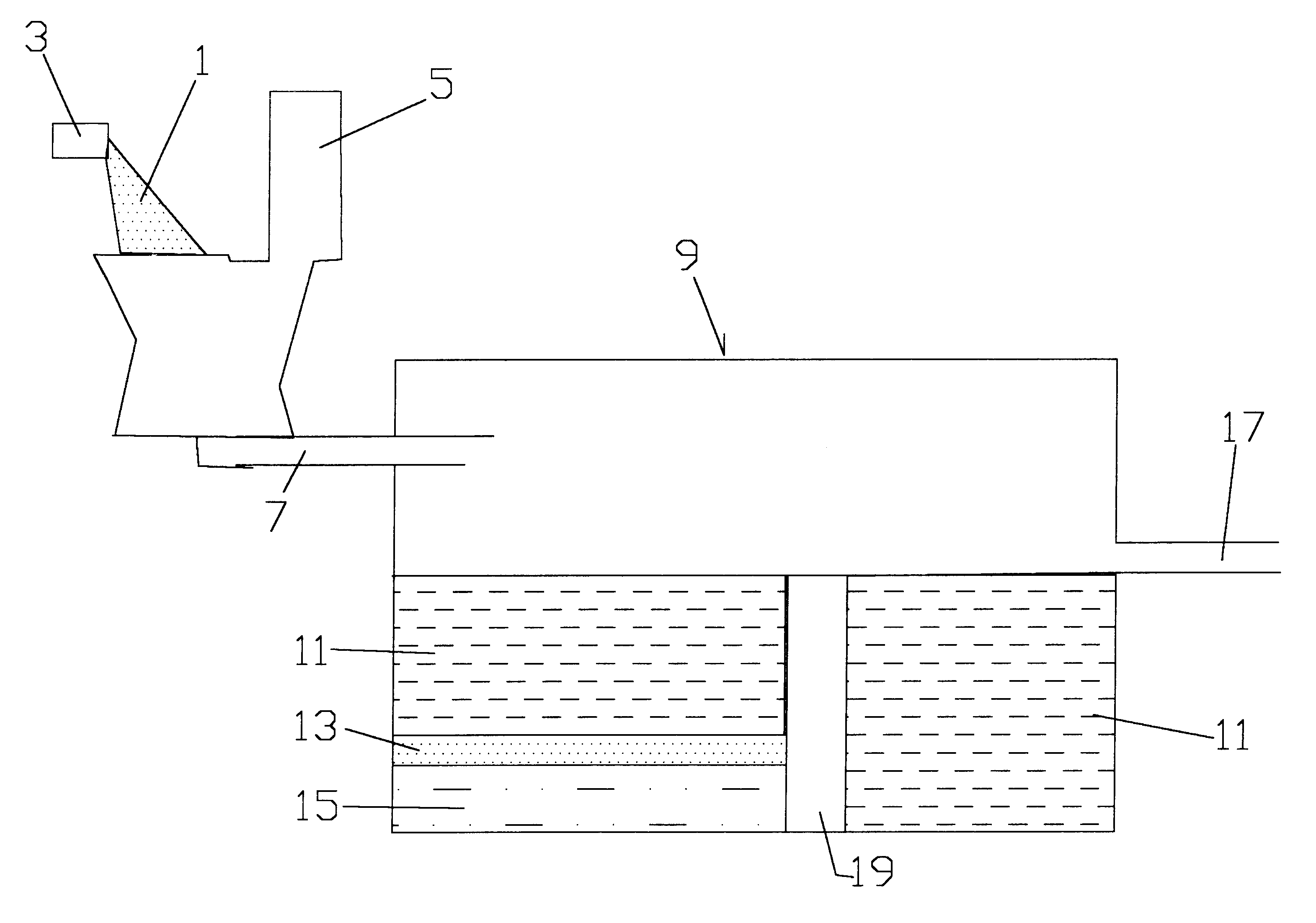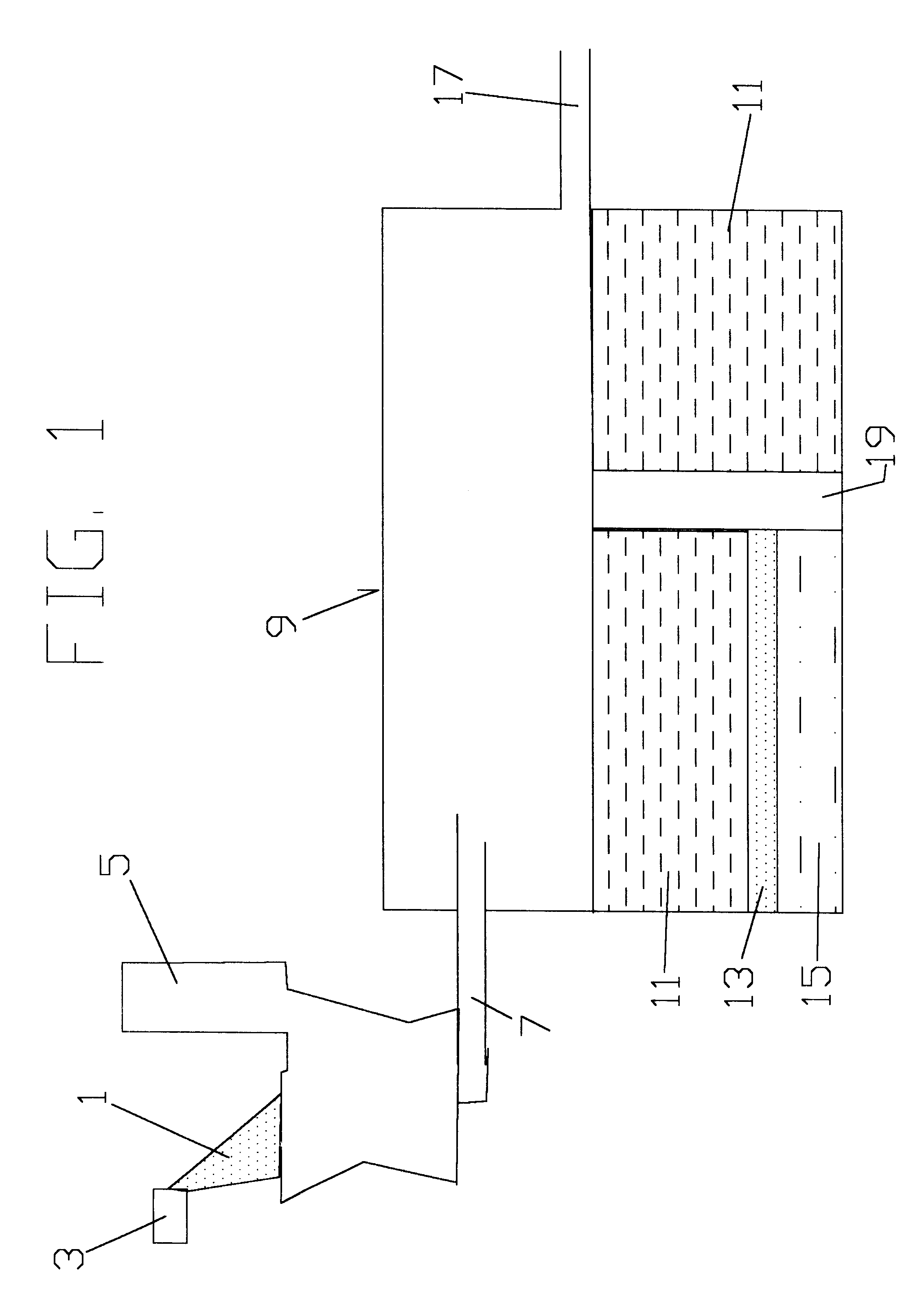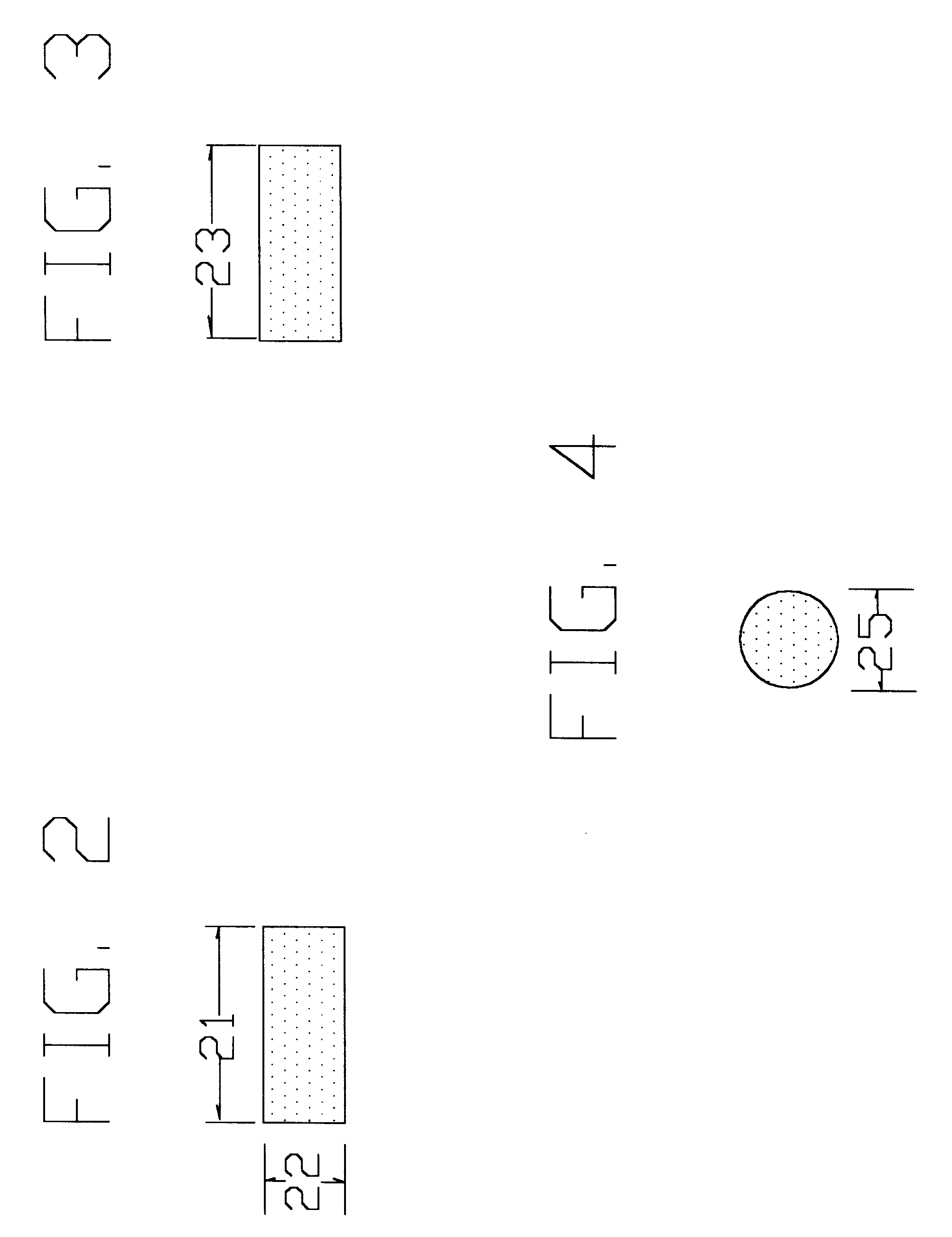Enzyme and bacterial combination in a slowly dissolvable matrix for septic tanks, grease traps and waste treatment
a technology of septic tanks and bacterial combinations, applied in the field of enzyme and bacterial combination in a slowly dissolvable matrix for septic tanks, grease traps and waste treatment, can solve the problems of sludge accumulation, manual addition is traditionally unreliable, and mechanical addition is often expensive and maintenance intensiv
- Summary
- Abstract
- Description
- Claims
- Application Information
AI Technical Summary
Problems solved by technology
Method used
Image
Examples
example 2
In many waste treatment lagoons, cesspools and septic tanks there is often a disproportionate amount of organic solids accumulation in the bottom (lower layers) of the liquid treatment area. It is desirable that this solid matter be effectively liquefied, suspended and hydrolytically degraded by enzymes and / or bacteria. Enzymes and / or bacterial bioaugmentative additives, when added to such waste treatment areas become suspended, dissolved, or solubilized in the upper, aqueous phase of the treatment area and may be diluted or washed from the system by normal hydraulic flow prior to their diffusion into the lower, more solid intensive layers or phases of the treatment area. This results in less application of hydrolytic activity to the organic solids in the bottom and impairs a product's performance in specific circumstances. We have found that if the previously described coating, and the active bacteria and / or enzyme components are linked to a granule with relatively high specific gr...
example 3
A dry, granulated enzyme preparation was developed using the following ingredients and procedure.
Upon liquefaction, the surfactant wax combination was physically blended (homogenized) with a mixer with the enzyme until a uniform consistency was achieved. The coating / enzyme combination was then allowed to cool and solidify at room temperature (approximately 26.degree. C.). This allowed a uniform layer of surfactant to surround the enzyme granule. Upon granulation this composition is useful to break down animal fats in grease traps and sewer lines.
The preferred range of ingredients in percentage by weight based upon the three components are 10% to 70% enzyme, 10% to 70% wax, and 10% to 70% of surfactant.
EXAMPLE 4
A dry, granulated enzyme preparation in combination with a granulated limestone carrier (partical size 0.5 mm to 5.0 mm), enzyme, surfactant and wax was prepared using the following ingredients and procedures.
Upon liquefaction, the surfactant wax combination was physically ble...
example 4
replacing half of the enzyme with Bacillus psychrohilus on bran. The enzymes in all of the above Examples can be replaced in whole or in part with viable bacteria and / or bacteria spores. The BACKGROUND OF THE INVENTION lists large numbers of bacteria that can be employed.
Any enzyme can be used in any of the examples, alone or in combination with other enzymes as the method of the present invention prevents interreaction of the enzymes. In an aqueous media, the enzymes can react with each other.
The enzyme activity of the granules of the present invention over time were measured using the following procedure. Basically a specific amount of water is added to the granules, and then added water is recovered at particular time intervals at tested for enzyme activity. After a water sample is collected it is then replaced by a fresh water sample. More specifically:
1) Add 100 ml of water to 0.5 grams of granules.
2) Swirl in beaker for 15 seconds, then allow sample to settle for 15 minutes, c...
PUM
| Property | Measurement | Unit |
|---|---|---|
| diameter | aaaaa | aaaaa |
| melting point | aaaaa | aaaaa |
| melting point | aaaaa | aaaaa |
Abstract
Description
Claims
Application Information
 Login to View More
Login to View More - R&D
- Intellectual Property
- Life Sciences
- Materials
- Tech Scout
- Unparalleled Data Quality
- Higher Quality Content
- 60% Fewer Hallucinations
Browse by: Latest US Patents, China's latest patents, Technical Efficacy Thesaurus, Application Domain, Technology Topic, Popular Technical Reports.
© 2025 PatSnap. All rights reserved.Legal|Privacy policy|Modern Slavery Act Transparency Statement|Sitemap|About US| Contact US: help@patsnap.com



